The shape of poetry: Carl Andre’s typed works
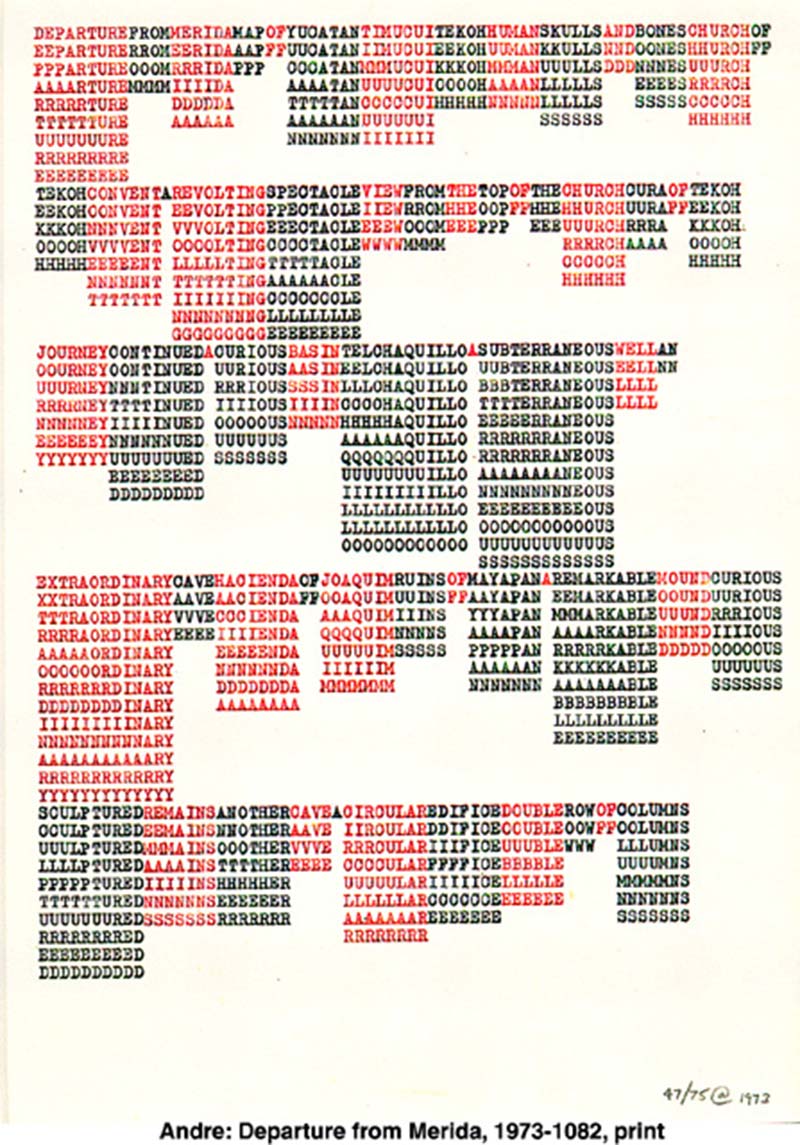
Series investigating the use of the typed text as an artistic medium.
Later in the 20th century: the typed works of Carl Andre.
I have used the typewriter as a machine or lathe or saw to apply letters on the page. I really do feel very tactile using the typewriter. I never learned to use a typewriter automatically. I can still only type with one finger, but that made each operation of typing a very machine-like act. It was like actually embossing or applyng physical impressions on to a page, almost as if I had a chisel and was making a cut or a dye and making a mark on metal. Carl Andre, excerpt from Poetry, Vision, Sound 1975. From Carl Andre: CUTS Texts 1959-2004
In the period between 1960 and 1964 Carl Andre briefly interrupted his sculptural production. During this interim the artist explored unconventional forms of poetry that decidely influenced the sudden conceptual shift of the mid 1960′s that saw him abandon his Brancusi-esque previous production to work with gridded floor pieces.
Before arranging unjointed squares of industrial material, he devised text-based grids like “Untitled” (see below, 1960), applying numbers and words within the mechanical grid provided by the typewriter. “Copper”, “lead” and “magnesium” even appeared as repeated grids of words before the materials were directly used. Delia Solomons argues that “Andre’s refusal to connect his words in sentences (i.e. his denial of syntax as communicative glue) is a direct precursor to his rejection of joints or rivets to connect his clastic units, which would have stabilized his sculptures.”
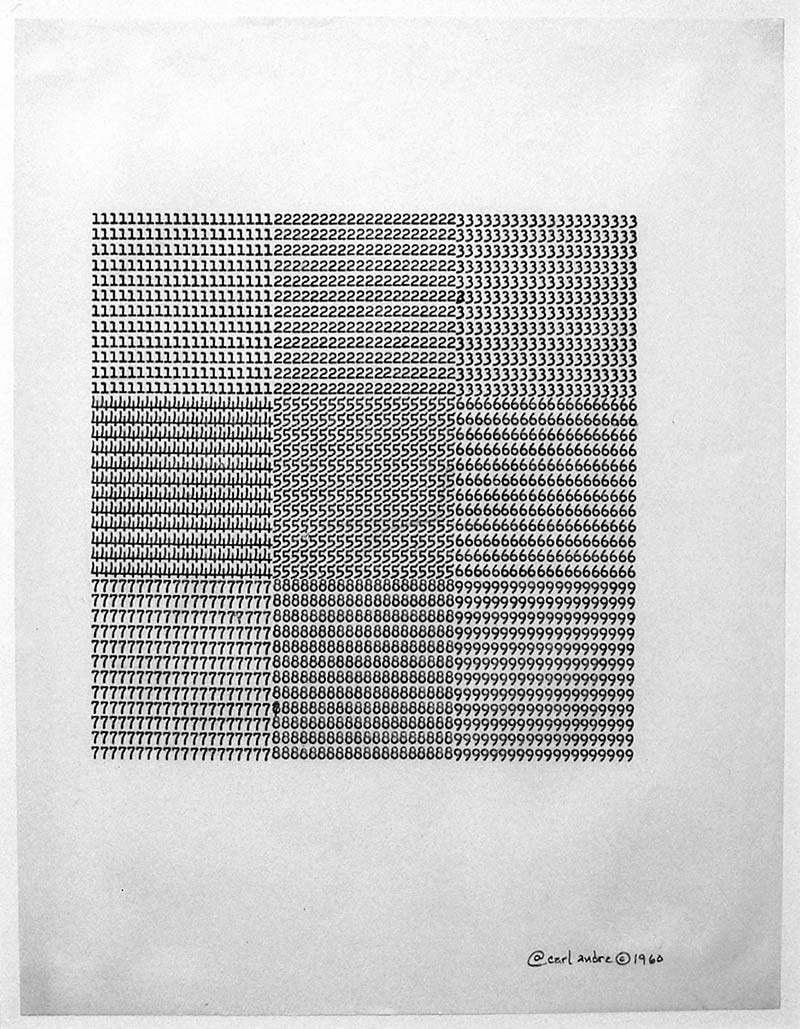
Andre’s typed poetry is a precursor to his major conceptual shift not only from a morphological point of view (grids, rows, scatters, clastic units), but also for conceptual principles like the inversion of negative and positive space: the work he made in “Cuts“, a 1967 installation in which concrete bricks covered a floor of the Dwan Gallery, leaving six recesses corresponding with his earlier sculpture “Equivalents” (1966), finds an original parallel in the poem “America Drill”, 1963, or “Red Red” (1967), two works (see below) which reversed the typical hyerarchy between the negative space of the page and the positive presence of the typed words.
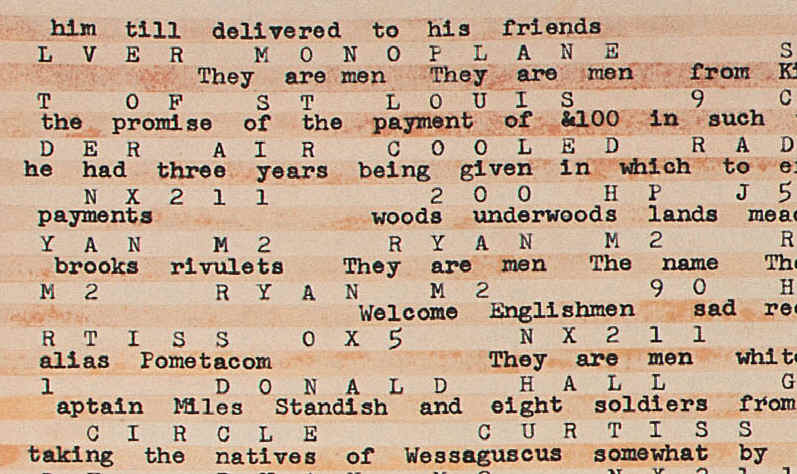
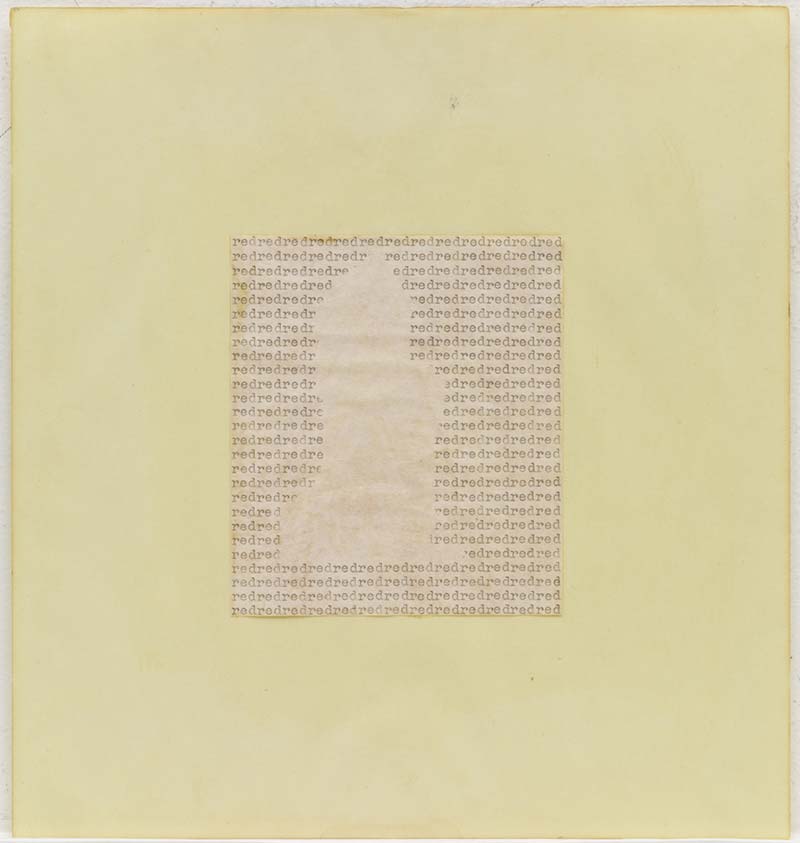
Another concept found by Solomon in Andre’s poems before than in his sculptures is the artwork as a place or site and how the placement of the artwork in a gallery or of a word within a geometrical background affects the meaning.
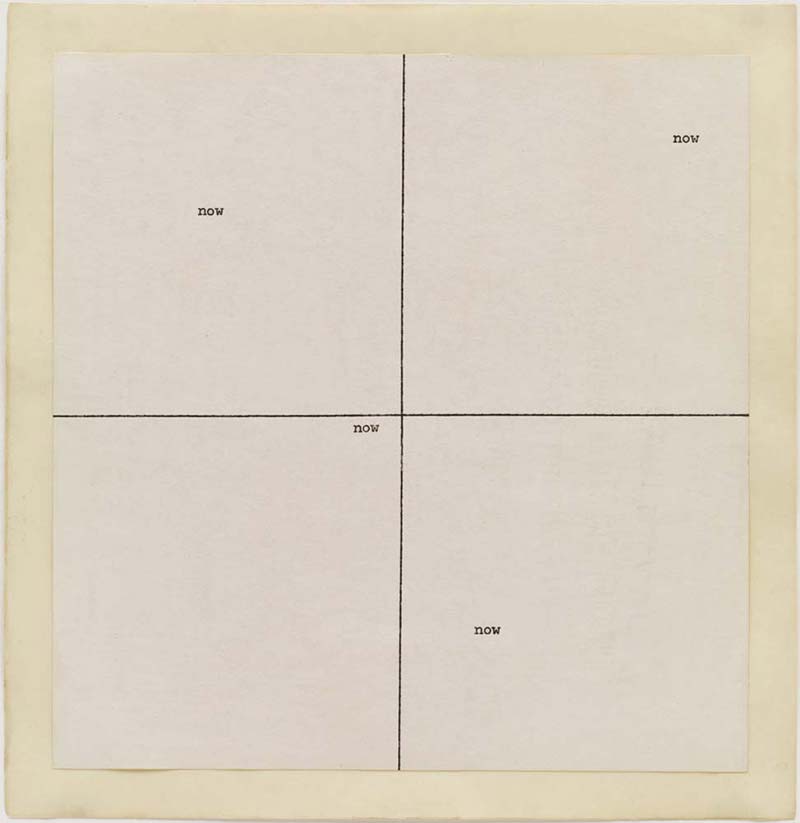
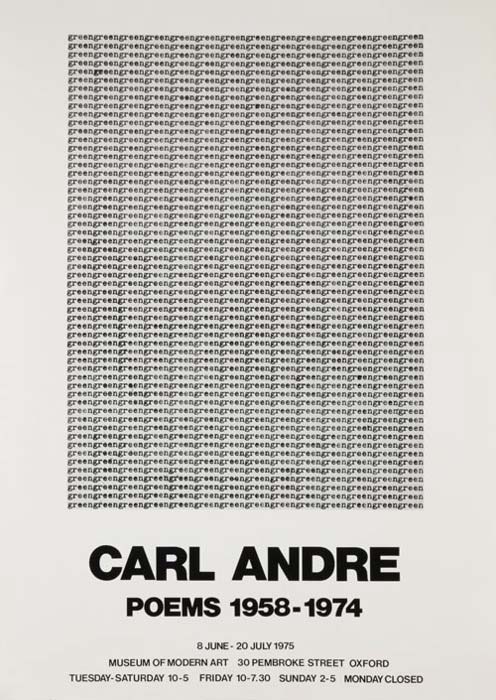
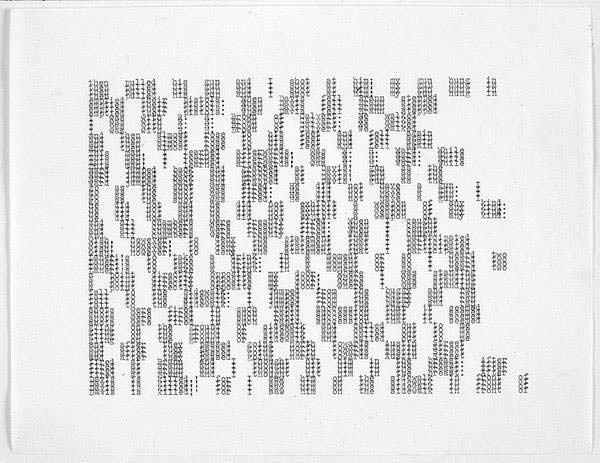
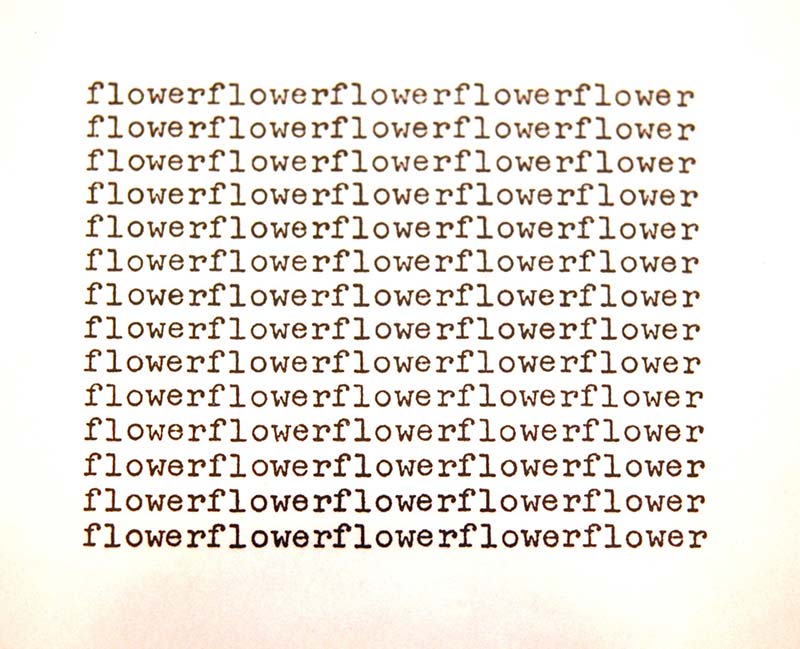
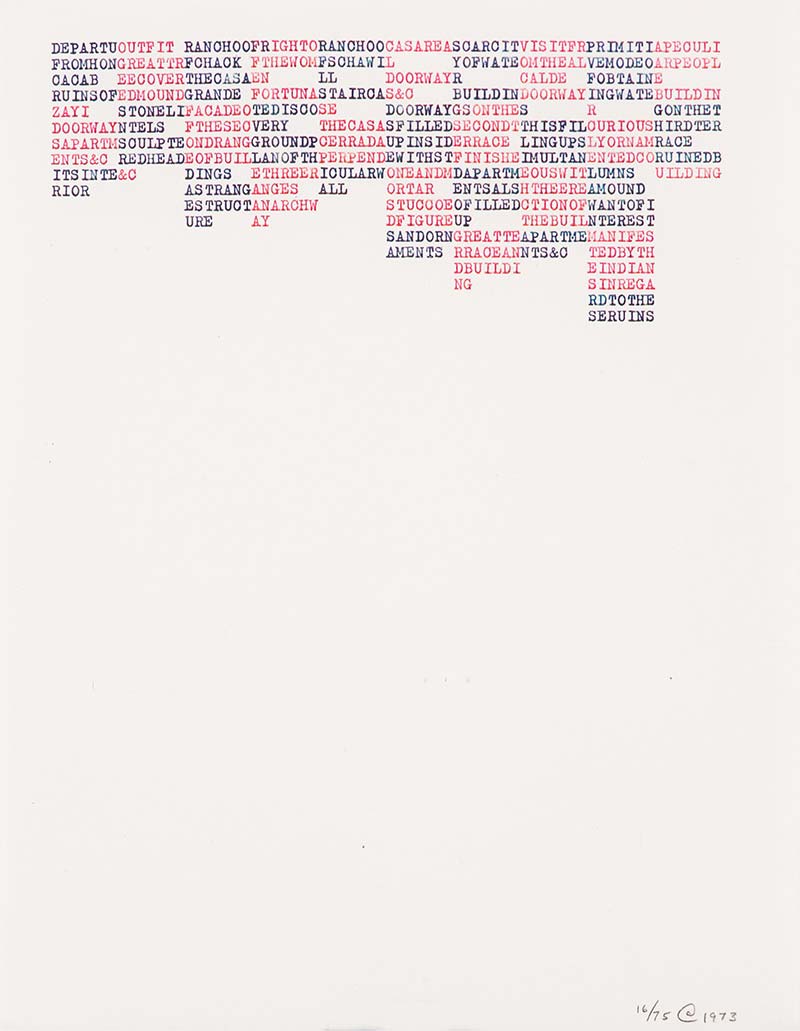

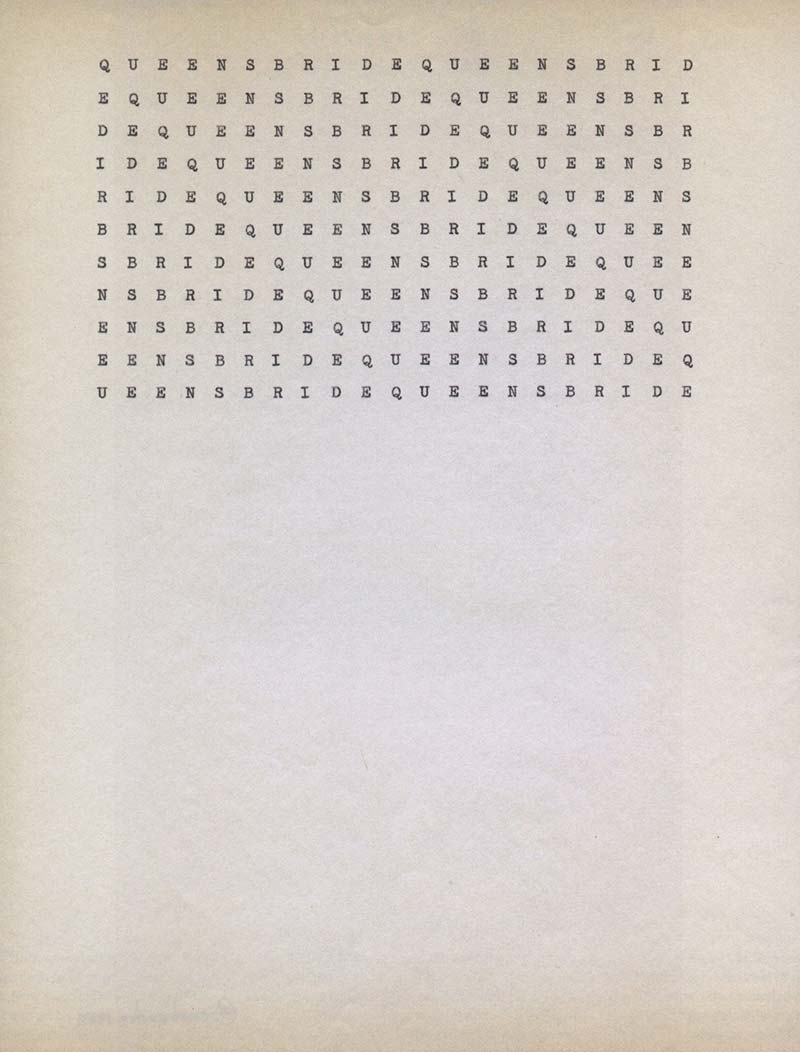
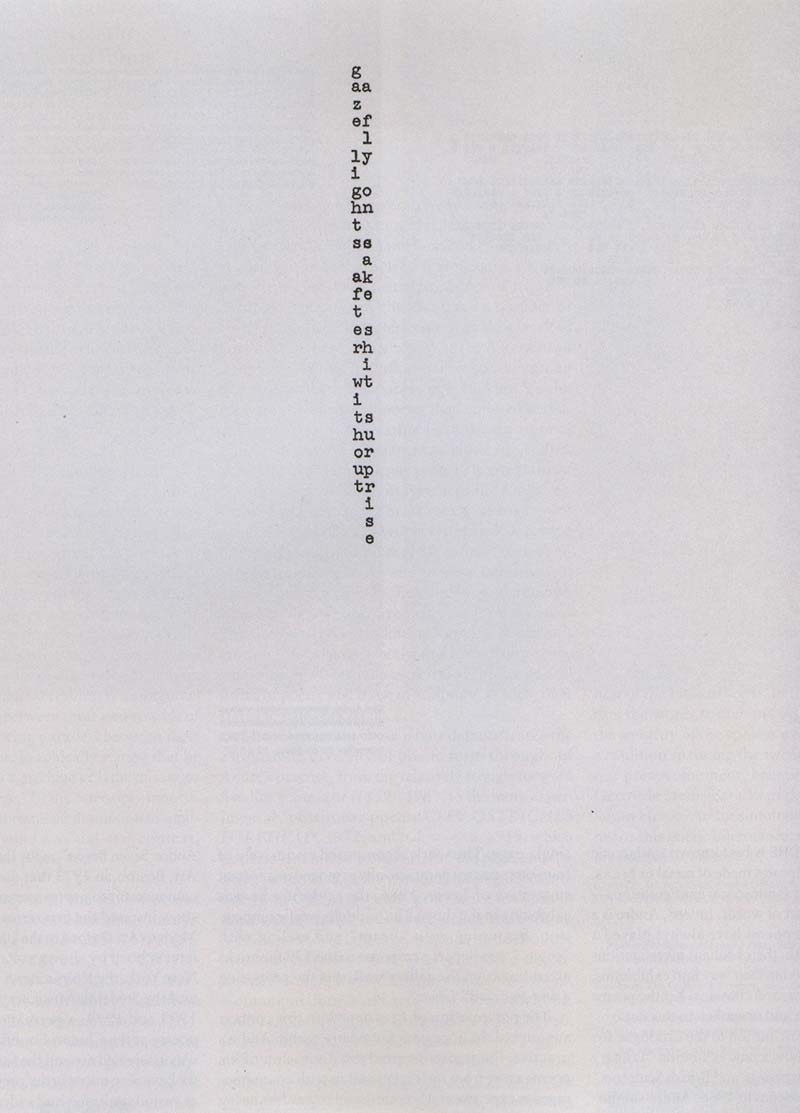
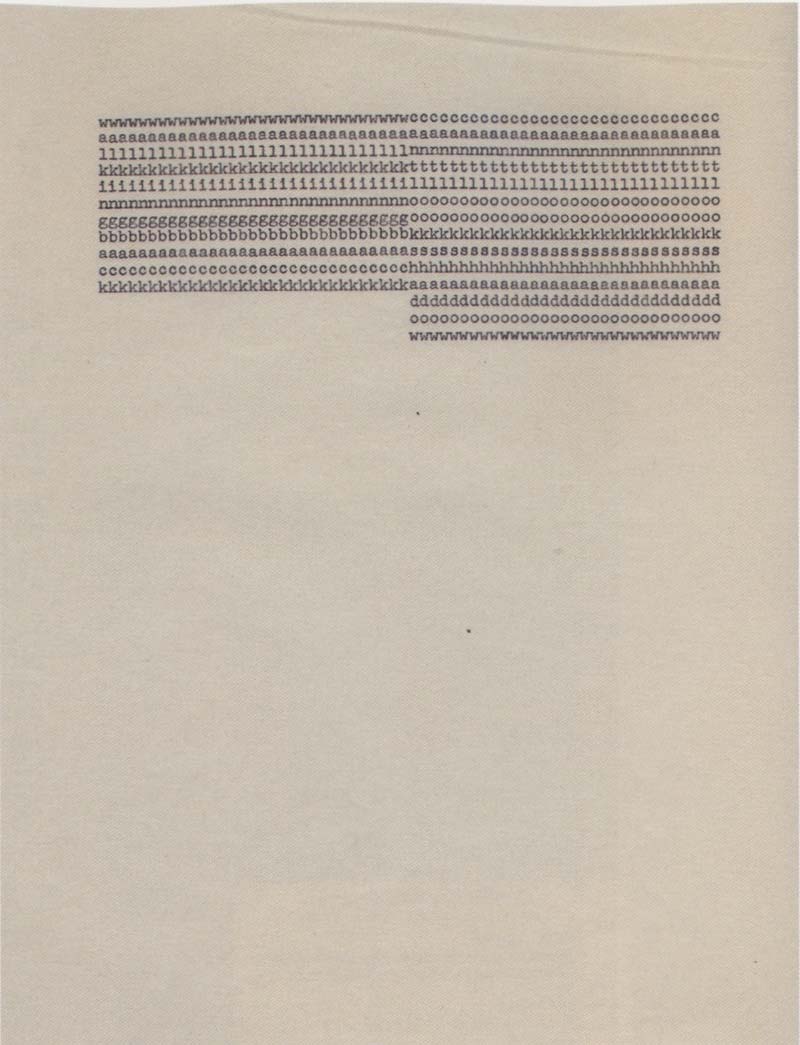
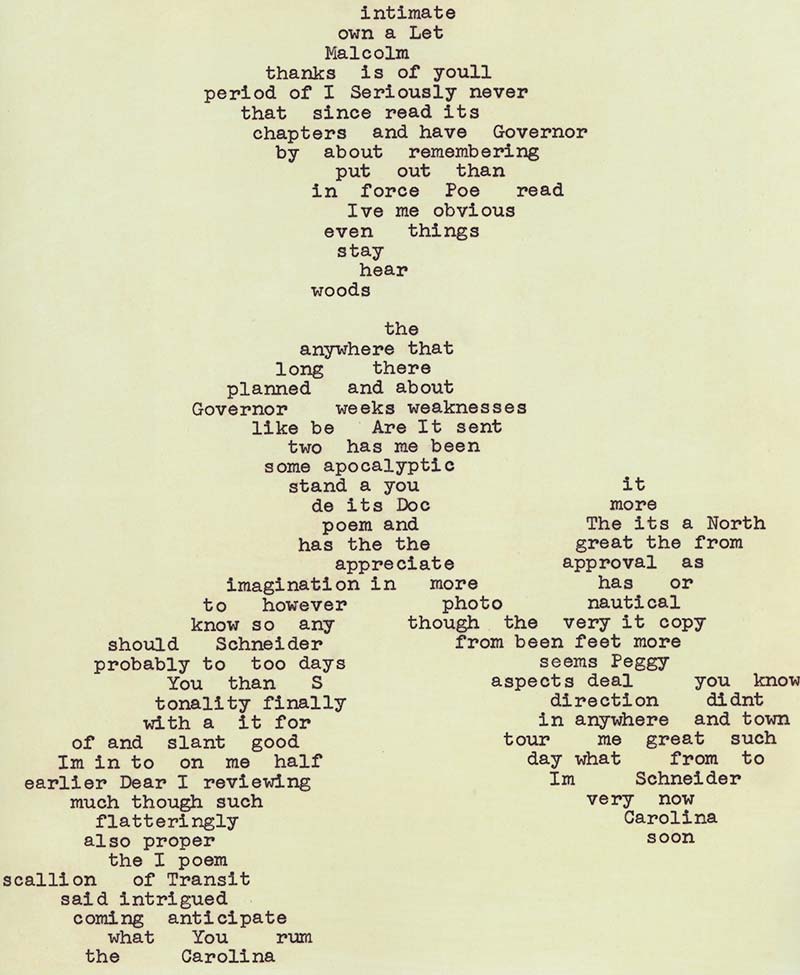
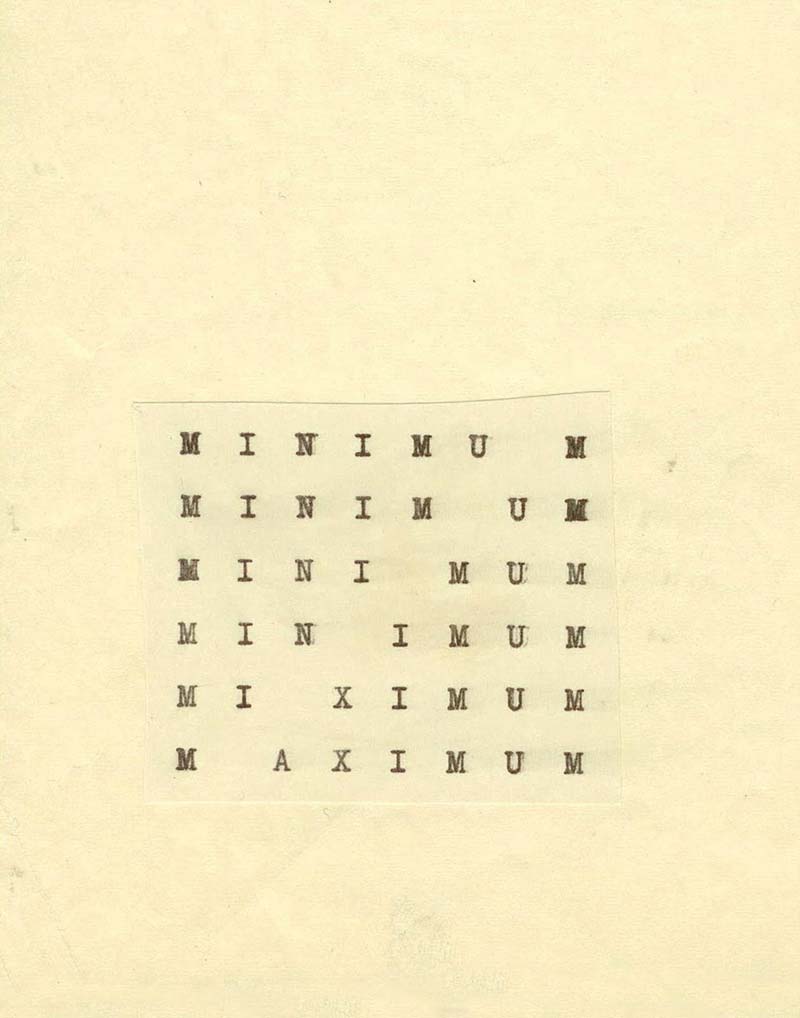
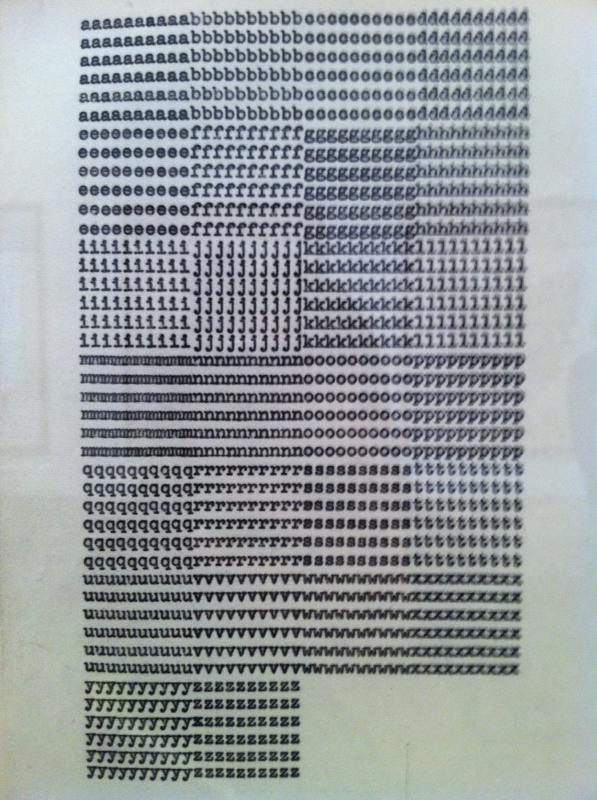
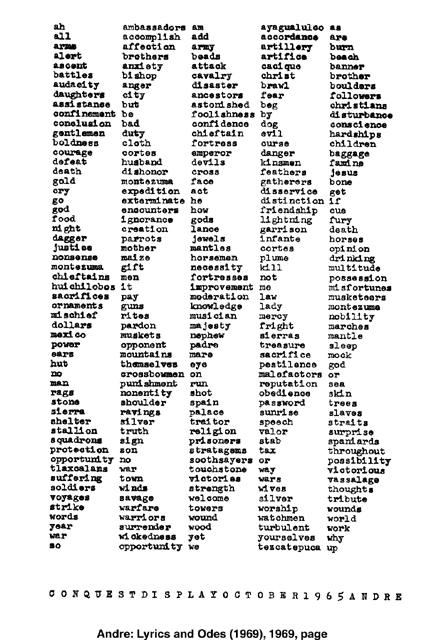
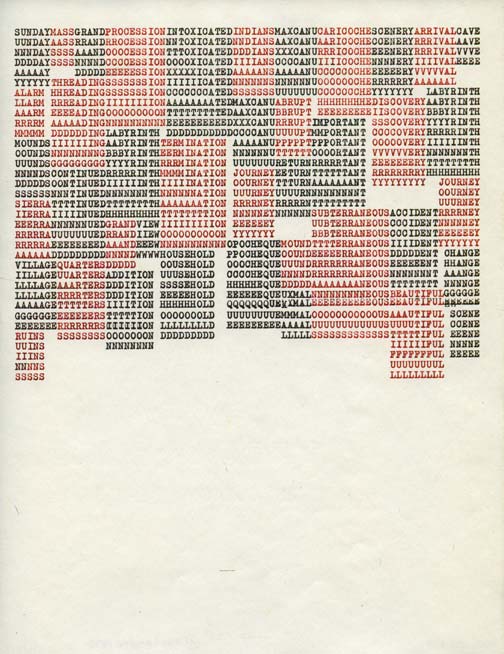
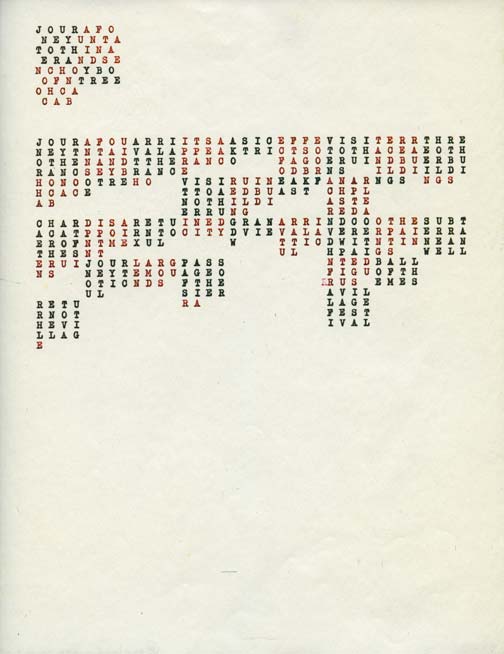
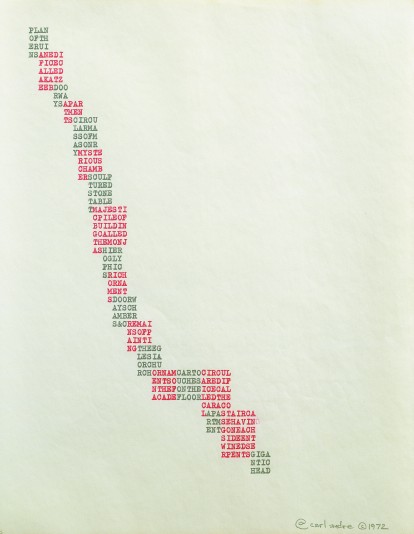
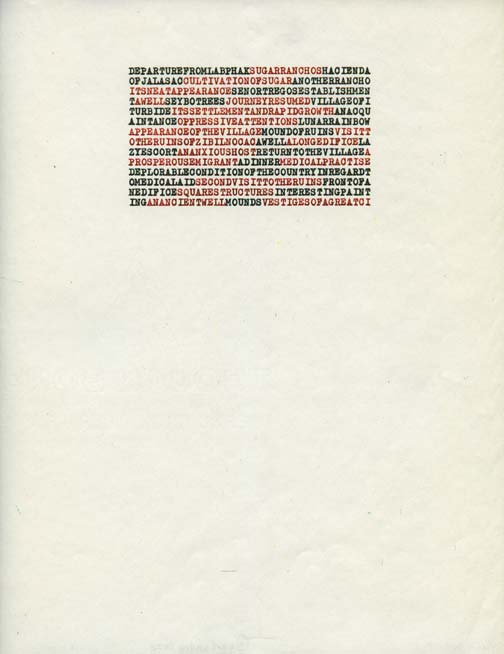
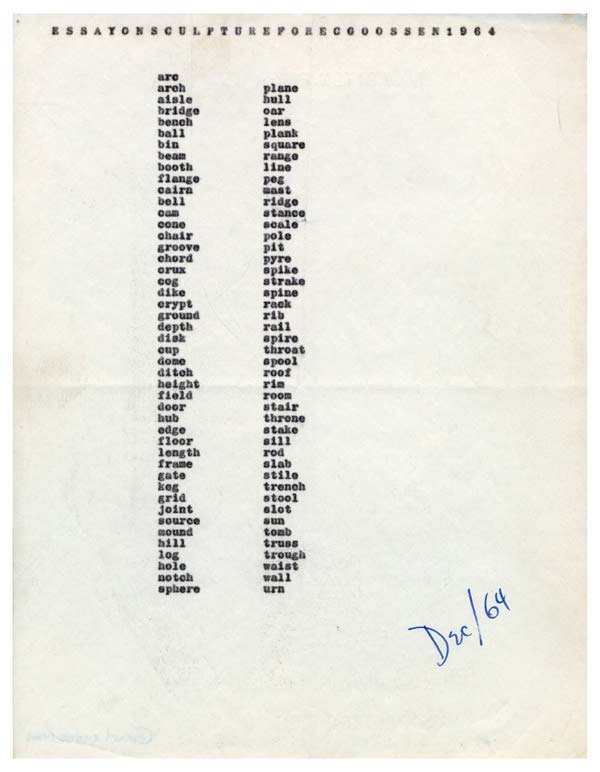
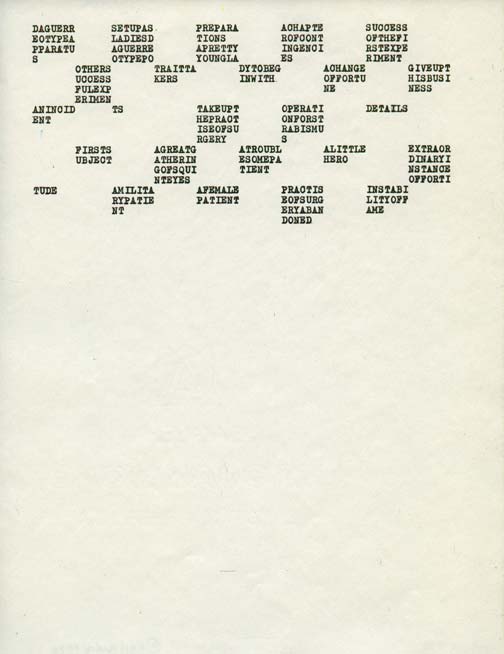
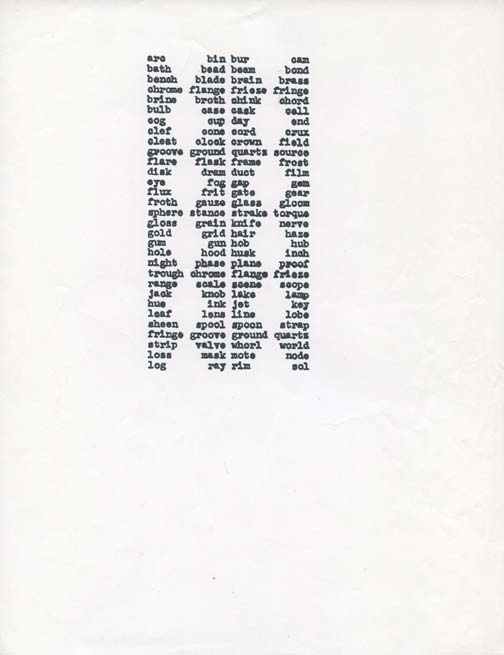
Images From:
Lines Which Do Not Exist, and Rudy/Godinez
Related:
http://www.micheledidier.com/media/catalog/customfield/carl_andre__america_drill.pdf
Delia Solomon on Carl Andre


